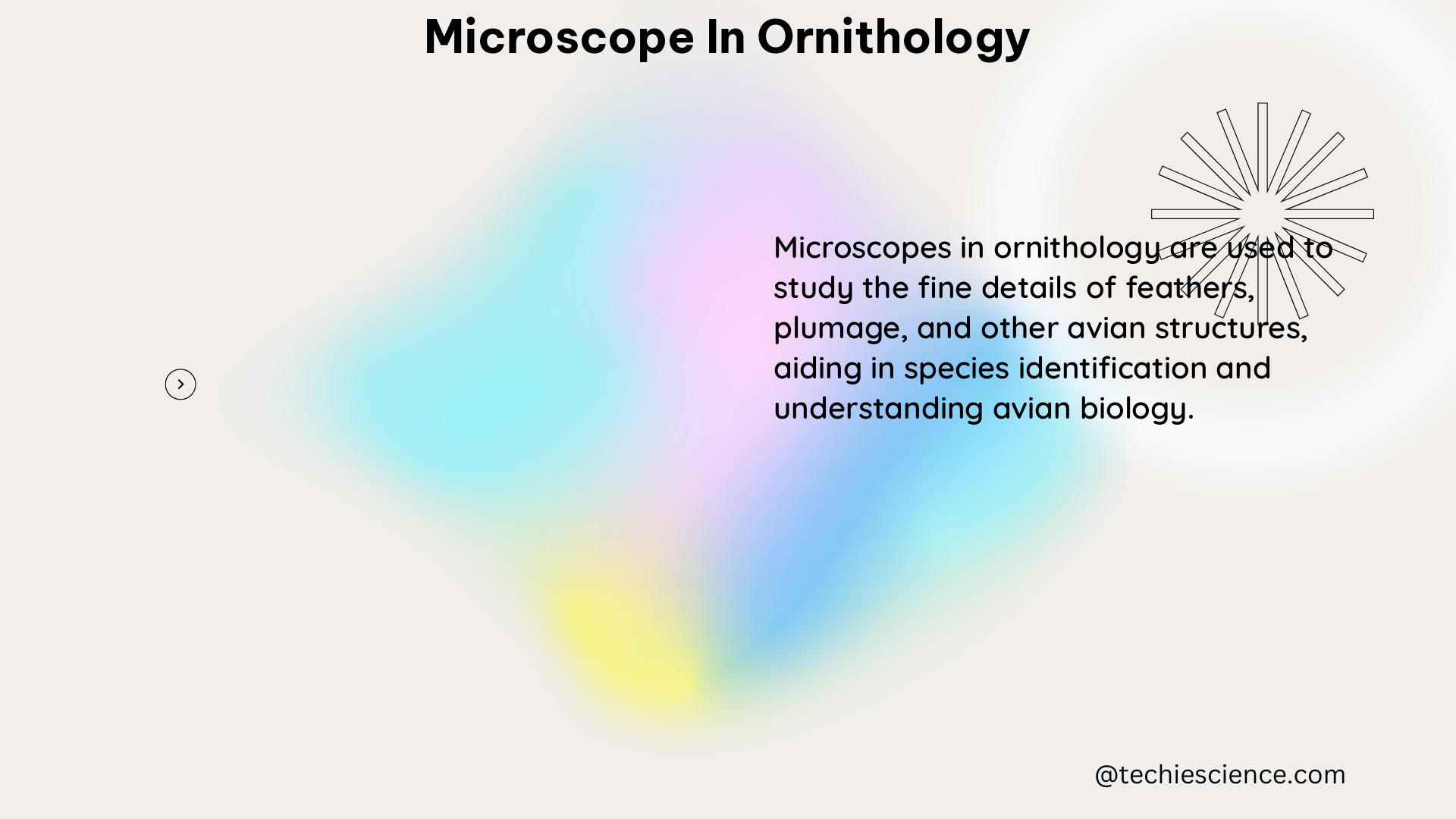Microscopy plays a crucial role in the field of ornithology, particularly in the study of feather microstructures and their coordination with the dimensional characteristics of birds. The metric coordination between these features can provide valuable insights into the morphological relationships between different bird species.
Feather Microstructures and Dimensional Characteristics
In a comprehensive study on the metric coordination between dimensional characteristics of birds and microscopic characters of their downy feathers, researchers analyzed various morphological features of feathers, including:
- Feather length, width, and thickness
- Diameter and density of feather barbules and barbs
These measurements were then compared with the body weight, wingspan, and tail length of the birds to reveal any correlations or patterns. The findings from this study can help ornithologists better understand the functional and evolutionary relationships between feather microstructures and the overall body morphology of birds.
Advanced Microscopy Techniques

The use of advanced microscopy techniques, such as scanning electron microscopy (SEM) and confocal microscopy, can provide high-resolution images of feather microstructures, allowing for detailed analysis of their properties. These techniques offer the following capabilities:
- Scanning Electron Microscopy (SEM): SEM can be used to visualize the surface structure of feathers, providing detailed information about the arrangement and morphology of feather barbs and barbules.
- Confocal Microscopy: Confocal microscopy can provide 3D images of feather barbs and barbules, enabling researchers to study the spatial relationships and interactions between these microstructures.
Image Analysis Software
In addition to the advanced microscopy techniques, image analysis software can be used to quantify and analyze the data obtained from microscopy. For example, the “wildlifeDI” R-package includes a suite of functions and indexes to quantify animal interaction, including the analysis of feather microstructures.
Physics of Microscopy in Ornithology
When it comes to the physics of microscopy in ornithology, there are several relevant formulas and theorems to consider. Understanding these principles can help ornithologists optimize their microscopy setups and interpret the data more effectively.
Abbe Diffraction Limit Formula
The resolution of a microscope is determined by the numerical aperture (NA) and the wavelength of light used, as described by the Abbe diffraction limit formula:
d = λ / (2 * NA)
where:
– d is the resolution
– λ is the wavelength of light
– NA is the numerical aperture
Depth of Field Formula
The depth of field in microscopy is given by the formula:
DOF = 2 * λ * (n – NA^2) / NA^3
where:
– DOF is the depth of field
– λ is the wavelength of light
– n is the refractive index of the medium
– NA is the numerical aperture
Physics Examples
The use of different wavelengths of light in microscopy can affect the resolution and contrast of the images obtained:
- Shorter Wavelengths: Blue or ultraviolet light can provide higher resolution but may require specialized equipment and can be harmful to some biological samples.
- Longer Wavelengths: Red or infrared light can provide lower resolution but may be safer for some samples and can penetrate deeper into tissue.
Physics Numerical Problems
Physics numerical problems in microscopy might involve:
- Calculating the resolution or depth of field for a given microscope setup
- Determining the optimal wavelength of light to use for a particular sample
References
- Metric coordination between dimensional characteristics of birds and microscopic characters of their downy feathers on the example of some Anseriformes species
- A Model of Discovery: The Role of Imaging Established and Emerging Microscopy Techniques in Biomedical Research
- Individual-Based Tracking Systems in Ornithology

The lambdageeks.com Core SME Team is a group of experienced subject matter experts from diverse scientific and technical fields including Physics, Chemistry, Technology,Electronics & Electrical Engineering, Automotive, Mechanical Engineering. Our team collaborates to create high-quality, well-researched articles on a wide range of science and technology topics for the lambdageeks.com website.
All Our Senior SME are having more than 7 Years of experience in the respective fields . They are either Working Industry Professionals or assocaited With different Universities. Refer Our Authors Page to get to know About our Core SMEs.